Frozen Seas
Ice Ahead
As I was preparing to go to bed one night, I began to hear some loud crashes and bangs against the hull. Then more screeches and scrapes. On the other side of the wall from my cabin is a large storeroom, so I could only assume that they were moving large containers around, and not doing too good a job of it. But then I thought…could that be our first sea ice? I headed out to the deck and sure enough…we had ventured into the realm of sea ice! Almost as if we had crossed an invisible line. Which of course, we had!
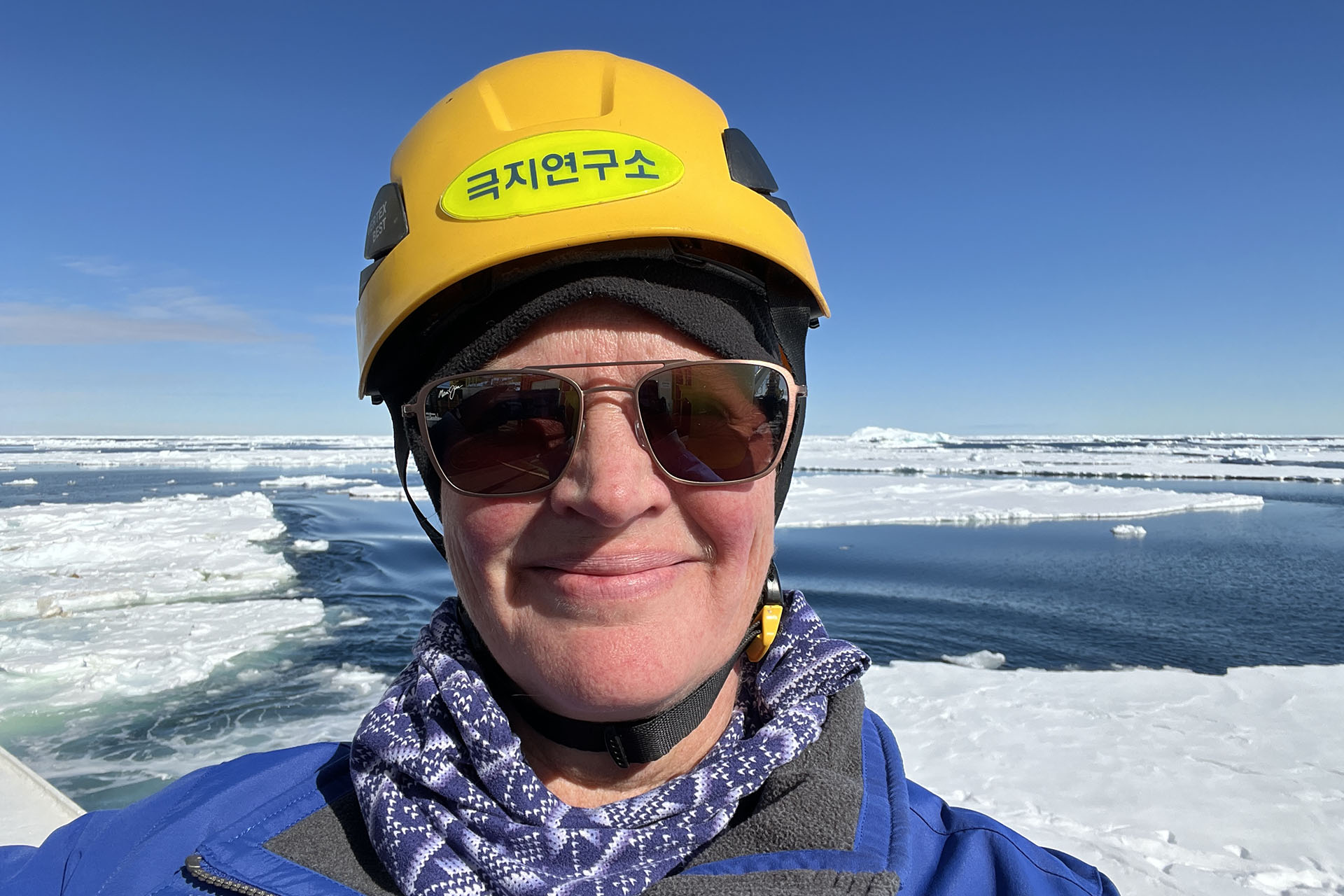
My very first time seeing sea ice! Photo by Jenn Magnusson.
The Antarctic Circle
We had just crossed the Antarctic Circle! The Antarctic Circle is the northernmost latitude in the Southern Hemisphere at which the centre of the sun can remain continuously above the horizon for twenty-four hours. Due to a variety of Earth’s forces, the position of the Antarctic Circle is not fixed and it currently runs 66°33′49.3″ south of the Equator. Most, but not all, of the continent of Antarctica is within the Antarctic Circle. Of course, it’s not really a magical line that delineates the region of sea ice, but it sure felt like a coincidence!
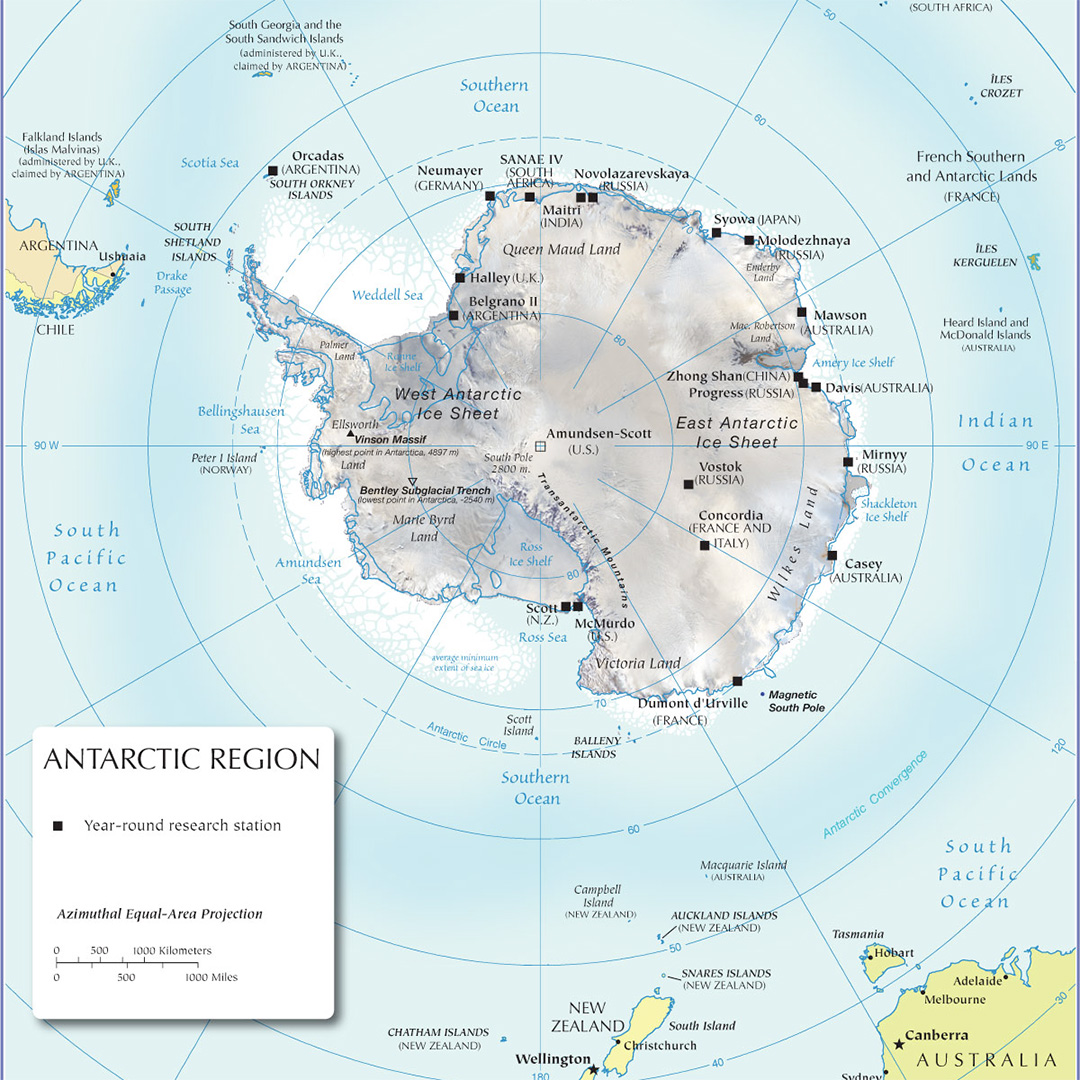
Physical Map of Antarctica from Nations Online
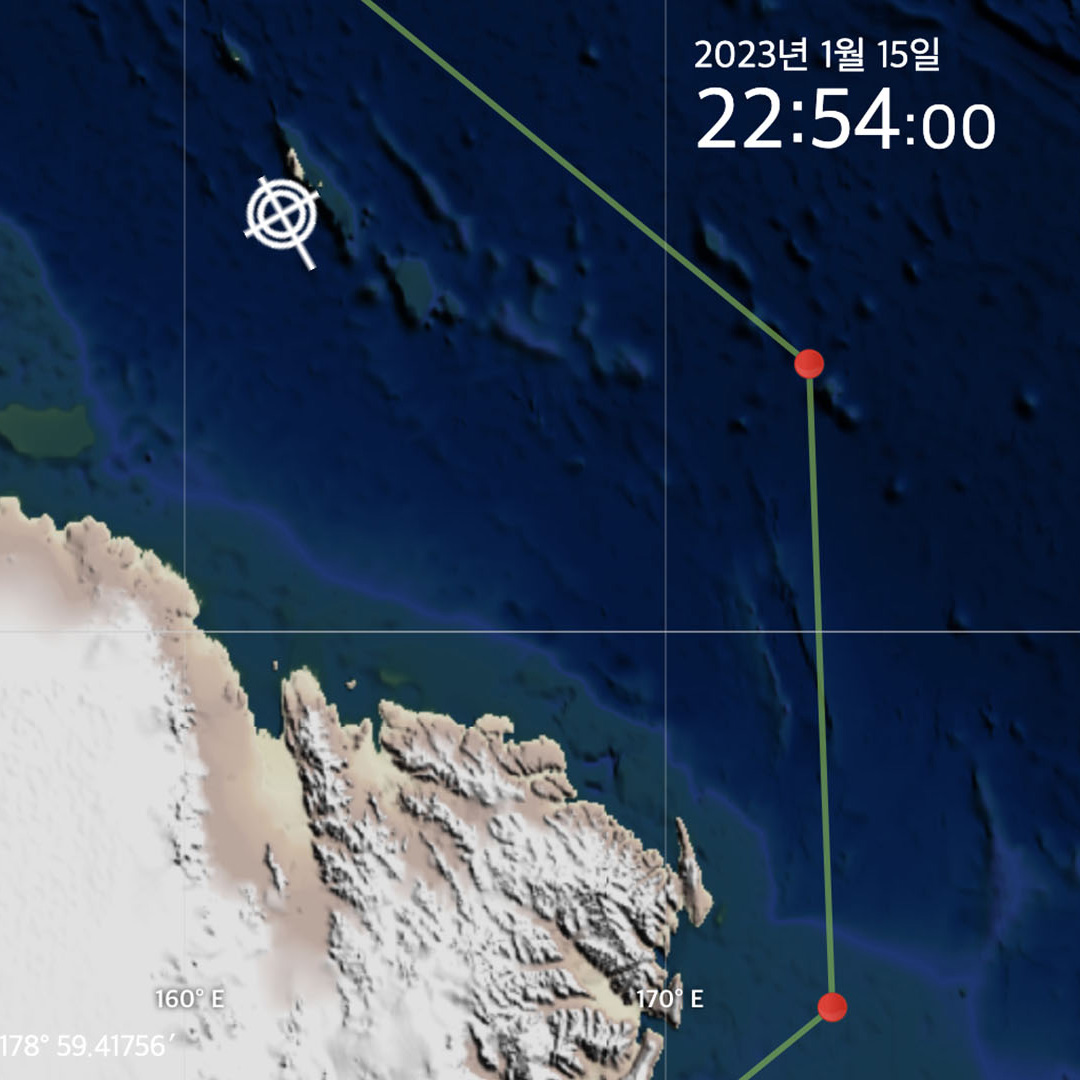
This is our ship’s map of approximately where we crossed the Antarctic Circle.
Through the ice
Since that first night, we’ve seen sea ice on and off in a great variety of compositions. Sometimes it can be slushy and erratic, like crushed ice in a cold drink. Other times it’s like big, white, irregular pancakes as far as the eye can see. The melange of ice can often include larger chunks like growlers, bergy bits and icebergs, which give it a more three-dimensional shape. Luckily, the IBRV Araon is made for this and steadfastly cuts through the ice. We have an ice pilot on board who studies the sea ice formations and is always on the lookout for the safest passage through the ice. The ship no longer follows a straight course but meanders its way toward its destination as the pilot picks his way through the ice maze. As a result, we have to be on our guard as the ship can lurch suddenly one way or another as it careens off of a piece of ice or avoids another. It is an amazingly beautiful and everchanging view and I have spent a lot of time on deck enjoying it, even though the temperature has been around -2° to -4°C. Brrr.
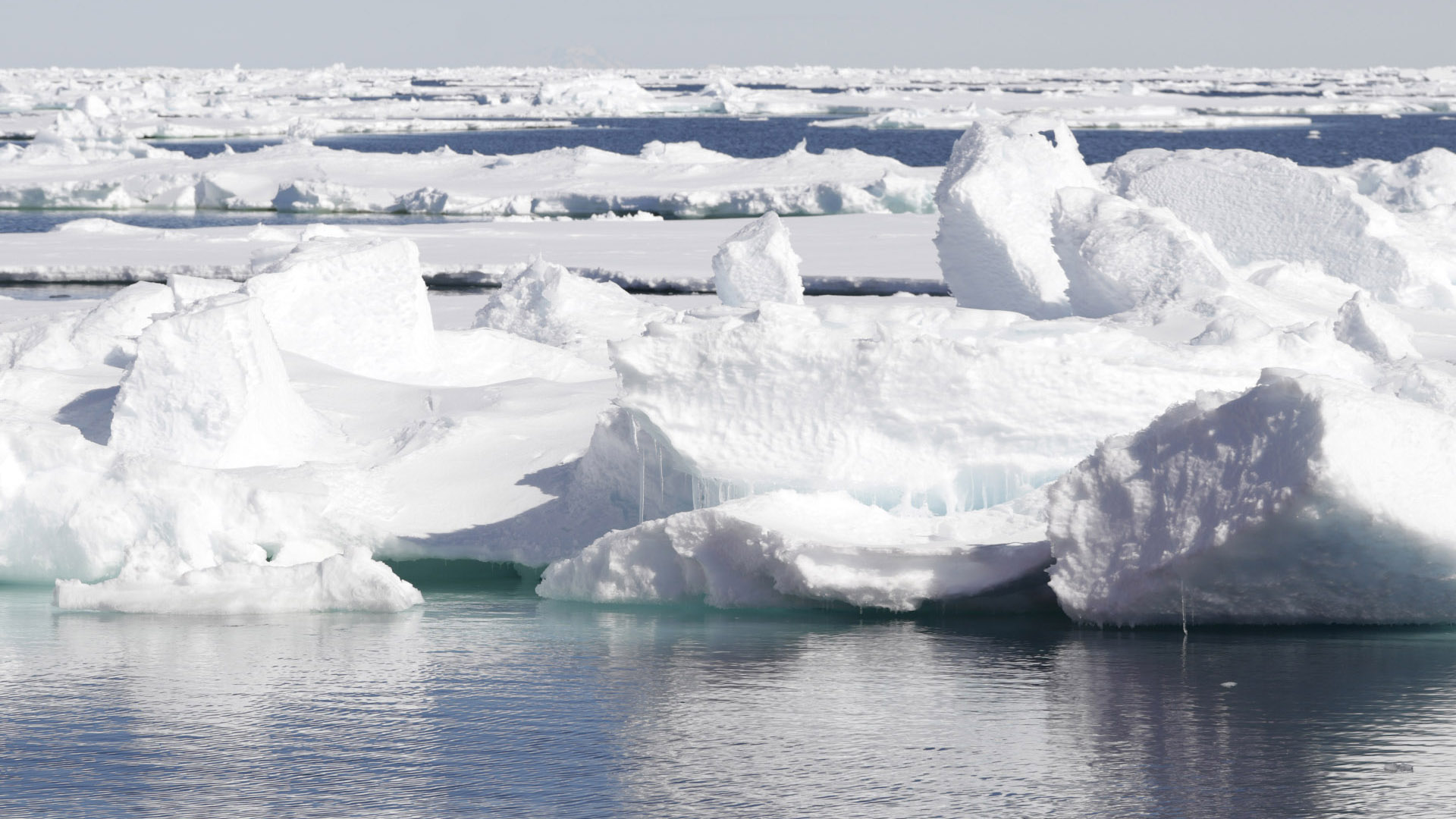
Sometimes the ice can be chunky with growlers. Photo by Jenn Magnusson.
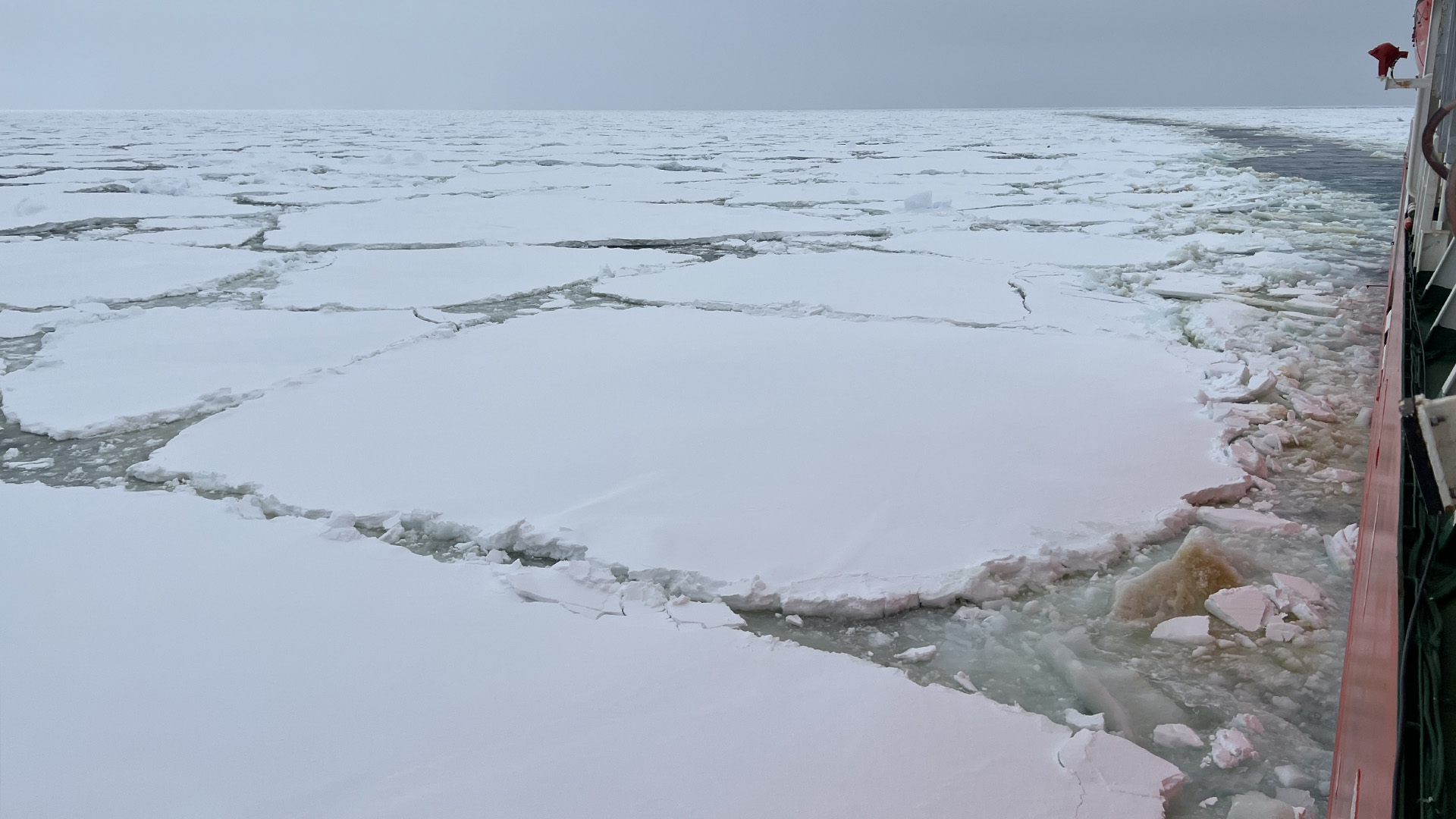
The ship’s track can be seen through the sea of ice. Photo by Jenn Magnusson.

The IBRV Araon makes ice cubes out of this 1-m-thick ice. Photo by Jenn Magnusson.
